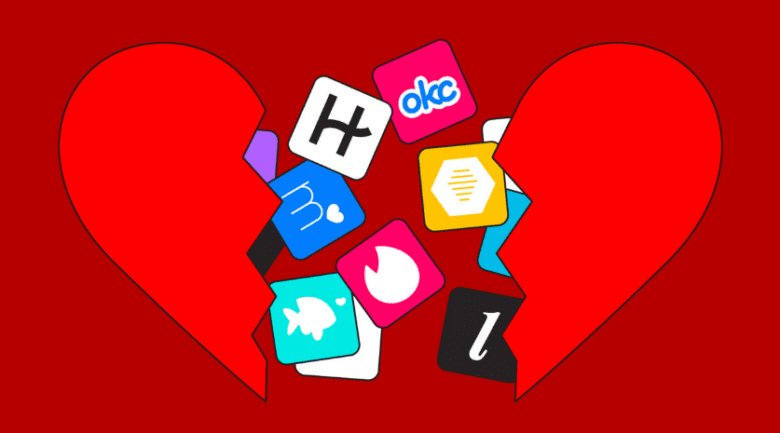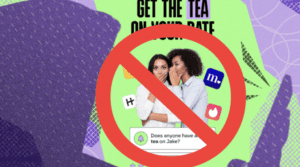Why Gen Z ’s Struggle With Dating Apps Is Real: How In-Person Experiences Are Replacing Apps That Fail to Connect With Subscribers
The golden age of the dating app may be ending. While apps like Tinder, Bumble, and Hinge once revolutionized the dating scene, today, these platforms are facing an existential struggle.
From burnout caused by endless swiping to shifting cultural norms among Gen Z, the market is saturated, and users are increasingly turning away from the traditional app-based approach to find something more meaningful.
This article explores the seven core reasons why dating apps are struggling, how they’re attempting to reinvent themselves, and what the latest trends reveal about the future of relationships.
1. The Rise and Oversaturation of the Dating App Market
The Initial Boom
In the 2010s, online dating exploded in popularity. Apps like Tinder pioneered the swipe-based model that made matching simple, fast, and addictive. This model appealed to millennials and later Gen Zers who grew up on their smartphones, already accustomed to social media, algorithmic feeds, and instant gratification.
This initial rise created a global market worth billions. For a while, it seemed like dating apps had completely changed how people meet, form relationships, and even define intimacy.
Saturation and User Fatigue
Fast forward to 2025, and the platform landscape has become bloated with apps like Hinge, Bumble, Coffee Meets Bagel, OkCupid, and more. Each claims to help people find their perfect match, but they offer little differentiation.
As a result, the user experience has grown stale. App fatigue, characterized by endless swiping, shallow chat, and repetitive rejection, has led many to ditch these platforms entirely.
| Indicator | Description |
| Too many apps | Over 1,500 dating platforms globally |
| Repetitive experience | Swipe-based mechanics dominate |
| User fatigue | 58% of users report feeling “burned out” |
| Lower retention | Decline in active users and subscribers |
2. Gen Z’s Desire for Real Connection Over Convenience
Generation Burnout
For Gen Z, dating apps don’t feel new or novel. Instead, they feel like a continuation of the digital overload they’ve experienced since childhood. Constant exposure to social media, influencer culture, and curated personas has led to a collective craving for authenticity.
They don’t want just another algorithm telling them who their ideal partner might be — they want in-person energy, emotional depth, and shared values.
Emotional Needs Post-Pandemic
The pandemic widened this emotional gap. Young people lost years of face-to-face interaction, and many now report heightened levels of loneliness, rejection, and low self-esteem linked to digital-only dating. They’re looking to reconnect emotionally — and dating apps haven’t evolved quickly enough to meet this shift in expectations.
3. The Business Model Is Designed to Keep You Swiping, Not Succeeding
Here’s the harsh truth: most dating apps are not designed to help you find love — they’re designed to keep you on the platform.
Engagement > Outcome
Apps make money through subscriptions, ad revenue, and paid boosts. The longer you stay single and actively swipe, the more valuable you are as a user. In this system, a successful relationship is bad for business.
This creates a conflict of interest where dating platforms optimize for stickiness, not success.
| Revenue Source | Example Feature |
| Subscriptions | Tinder Gold, Bumble Boost |
| Microtransactions | Super Likes, profile boosts |
| Data & Ads | Targeted advertising algorithms |
Users Are Catching On
Increasingly, young people are aware of this contradiction. There’s a growing sentiment among Gen Z that apps like Tinder and Hinge prioritize engagement metrics over actual connection. As awareness grows, so does skepticism — and with it, user attrition.
4. Attempts to Reinvent the Experience Aren’t Cutting It
To counteract these issues, companies are racing to reinvent the experience. But many changes feel superficial.
Gimmicks Over Substance
- Tinder’s video bios and profile quizzes
- Bumble’s “slow dating” timers
- Hinge’s audio prompts
- Experimentation with AI for dating assistants or automated compatibility analysis
These features may attract short-term interest, but they don’t solve the deeper issues of user disconnection, burnout, and meaningful interaction.
Gen Z Sees Through It
Gen Zers want experiences that feel real, not gamified. They see these feature rollouts as thin attempts to cover up systemic issues, like endless swiping, low-quality matches, and a lack of community.
5. In-Person Dating and Social Events Are Trending Again
The most significant shift in 2025 is the return to in-person dating.
Activities Over Algorithms
Speed dating, community mixers, hobby-based meetups, and other social events are becoming go-to solutions for those tired of screens. These options allow people to connect based on energy, not just profile pictures.
This movement prioritizes self-love, social wellness, and deeper interpersonal relations, especially among those who feel overwhelmed by digital platforms.
A Cultural Rejection of the Grind
The return of in-person dating signals a cultural rejection of the grind — the feeling that dating is just another task to complete. People no longer want to treat finding a partner like applying for jobs. They want joy, spontaneity, and shared activities that foster natural chemistry.
6. Niche and Tailored Platforms Are Gaining Momentum
Rather than fighting over the same user base, some companies are creating tailored platforms for specific needs and identities.
Examples include:
- Muzz – for Muslims seeking marriage
- HER – for LGBTQ+ women and nonbinary people
- Fruitz – where users define intentions using fruit metaphors
These apps, like the above, don’t try to appeal to everyone. Instead, they build stronger, more intentional communities — which is exactly what many young people are seeking.
7. The Future of Dating Apps Depends on Emotional Intelligence
The days of endless swiping and shallow engagement are numbered. To survive, the next generation of dating apps must be human-centered.
What Success Looks Like
To remain competitive, platforms must:
- Facilitate meaningful conversations early
- Offer better support for rejection and emotional safety
- Create practical ways to help people meet offline
- Build systems that reward empathy, not just engagement
Reinvention Through Authenticity
True reinvention won’t come from features or filters. It will come from values — putting connection before conversion, and people before profit.
Conclusion: Will Dating Apps Survive the Shift?
There’s no question that dating apps are struggling. But whether they completely collapse or evolve into something better depends on how deeply they are willing to change.
The next evolution will not be led by tech gimmicks or AI. It will be led by platforms that grow with their users, prioritize emotional wellness, and make dating joyful again.
If they fail to do that, the world may very well swipe left on them forever.



